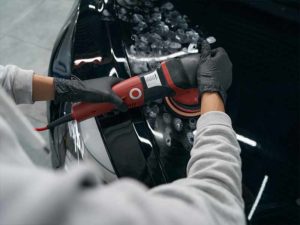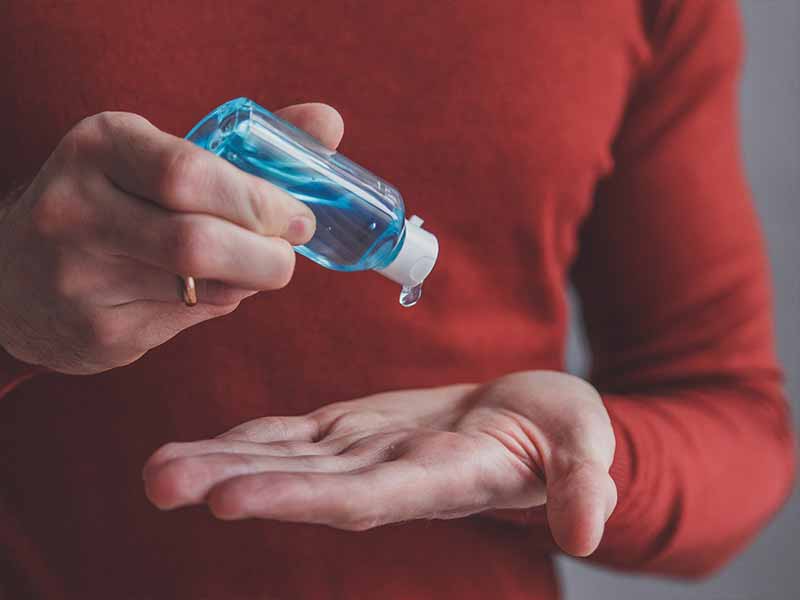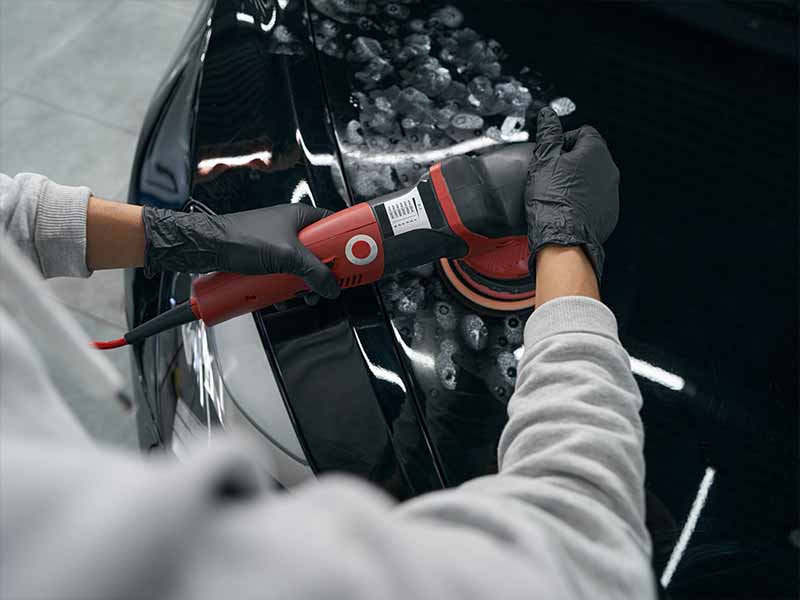Table of Contents
All products have pros and cons. When you’re trying to decide whether the product is a good fit your you you’ll want to know all of the benefits and problems to properly make your decision.
If you do decide to go with a ceramic coating and want to do it yourself, we recommend Adam’s UV Graphene Ceramic Coating. It’s extremely long-lasting (7+ years) and includes a UV luminescent to help ensure proper application.
Let’s run through all of the ceramic coating advantages and disadvantages so you can make an educated decision.
Advantages Of Ceramic Coating
- Helps prevent fine swirls and scratches
- Hydrophobic properties make your vehicle easier to keep clean
- Glossier than most waxes and sealants
- Prevents damage from tree sap, acidic bug guts, and harsh chemicals
- Protects from damaging UV rays
- Lasts for at least 2 years but some much last longer
Disadvantages Of Ceramic Coating
- Not completely scratch resistant
- Doesn’t prevent rock chips despite some claims
- Still susceptible to water spotting
- DIY application is more complex than wax or sealant
- Professional application is expensive
- Paint imperfections should be corrected before coating
- Gloss and hydrophobic properties dull over time and need maintenance
Advantages of Ceramic Coating
Ceramic coatings are pretty amazing and offer a lot of great benefits. Let’s cover the pros of choosing a ceramic coating:
Helps prevent fine swirls and scratches
The hard ceramic coating on top of your finish provides a good amount of protection. The much softer clear coat beneath it is very susceptible to fine swirls and scratches from typical washing and drying.
While a ceramic coating isn’t indestructible by any means, it is significantly harder than your clear coat and will help keep it looking freshly painted for years.
Hydrophobic properties make your vehicle easier to keep clean
Since water beads and glides off your car’s paint, it tends to stay cleaner longer. Dirt and typical road grime also is less prone to sticking to the paintwork.
Any dirt and grime that does manage to stick to it will be much more easily removed. The touchless car wash method is great when combined with a ceramic coating.
Glossier than most waxes and sealants
Ceramic coatings are extremely glossy. Pure carnauba wax is the only other product that can provide a better shine, but carnauba wax only lasts days as opposed to years of life from a quality ceramic coating.
Prevents damage from tree sap, acidic bug guts, and harsh chemicals
The hydrophobic properties and durability of a ceramic coating provide a great deal of protection from common damaging elements to automotive clear coatings.
Tree sap and bug guts can seriously damage unprotected finishes. If you get to these spots early you can prevent damage from occurring. But often they don’t get addressed until well after damage has happened.
Ceramic coatings not only create a barrier that these contaminants can’t penetrate, but they hydrophobic effect makes removing them much easier.
Protects from damaging UV rays
The sun’s ultraviolet rays take a toll on your car’s paint, especially the clear coat. Ceramic coatings repel damaging UV rays that slow the damage that can cause clear coat peeling.
Lasts for at least 2 years but some much last longer
Consumer-grade ceramic coatings usually last for 2 years at a minimum. Many last much longer. For instance, Gtechniq Crystal Serum Light advertises protection of up to 5 years.
Professional-grade ceramic coatings take longevity to an even greater level. They typically start at 5 years of protection and can go up to 10 years of durable protection.
Disadvantages of Ceramic Coating
Nothing is perfect, including ceramic coatings. They definitely have some drawbacks to consider. Let’s run down the cons to keep in mind:
Not completely scratch resistant
Advertising a ceramic coating as a way to protect your car’s paint from scratches is true but not always exactly what you think. The scratch protection that a ceramic coating can provide is only enough to prevent the fine spiderweb-like swirls and scratches you see in the finish of older vehicles.
It isn’t going to prevent someone from being able to key your car for instance. It also isn’t going to be strong enough to protect from other harsh treatment your vehicle might sustain that could cause scratches.
Anything sharp and hard enough to scratch through the clear coat and into the paint layers or down to the metal isn’t going to be stopped by a ceramic coating.
Doesn’t prevent rock chips despite some claims
I’ve seen some ceramic coating manufacturer’s claim that their ceramic coating will prevent rock chips. Like I explain above, anything hard enough to high your car or truck and scratch through the clear coat isn’t going to be protected from by a ceramic coating.
Typical rock chips you see on the front of your vehicle are inevitable unless you consider a more robust paint protection product.
To the credit of the manufacturer that does make these claims, a ceramic coating will likely prevent some smaller rock scratches and possibly a rock chip under the right circumstances. But it isn’t going to prevent that vast majority of them.
Still susceptible to water spotting
Water spots can be a very frustrating problem for professionals and DIY detailers. Whenever water beads on a car and evaporates, any minerals or other dissolved elements will be left behind and leave a ring or spot where the water bead dried.
Minerals left behind from evaporated water droplets are extremely tough to remove and unsightly. Unfortunately ceramic coatings can’t prevent this problem. They’ll make it easier to remove the water spots but it can’t prevent them.
If you have hard water in your area you should ensure you don’t wash your vehicle in direct sunlight and dry in thoroughly with a microfiber drying towel or an good powerful air dryer before the water beads have a chance to evaporate.
Alternatively you can use a water softening product to remove the minerals to eliminate the potential for water spotting.
DIY application is more complex than wax or sealant
A DIY ceramic coating is not necessarily difficult to apply but it does have challenges that a wax or paint sealant won’t.
It can be easy to end up with high spots in the coating that can make the paint look wavy and poor. Also, you might inadvertently end up with streaks in the coating.
These problems are fixable, but also why some people prefer to have a professional apply a ceramic coating for them instead of doing it themselves.
Professional application is expensive
DIY ceramic coating products can be expensive compared to paint sealant. But it makes sense for the benefits. Since applying a ceramic coating yourself can be a little more involved than traditional car waxes, you may prefer a pro car detailer apply a ceramic coating for you.
Professionals may use consumer-grade ceramic coatings, but they may also offer a professional-grade coating which obviously will be more expensive.
Whether you’re having a consumer-grade or professional-grade ceramic coating applied, the labor involved is significant and this makes the job quite expensive.
If you choose a professional-grade ceramic coating you can expect the expense to go up even more. But you’ll be getting a much more robust product.
Paint imperfections should be corrected before coating
Due to the expense and difficulty applying a ceramic coating, especially when combined with how long it will last, you should consider paint correction to remove swirl marks and fine scratches.
Any swirl marks, scratches, and other defects in your paint job will be locked underneath the ceramic coating and can’t be fixed without removing the coating with a polisher.
Taking the time to correct these imperfections prior to application is often a wise move. Especially if you’re going with a professional-grade coating applied by a trained detailer.
Gloss and hydrophobic properties dull over time and need maintenance
While the hard protective layer of protection a ceramic coating will provides last for years, the gloss and hydrophobic properties fade much more quickly.
Most ceramic coating manufacturers offer maintenance products that you’ll want to apply from time to time to boost the gloss and hydrophobic properties.
Professional Ceramic Coating Vs DIY
DIY ceramic coatings are great, but professional ceramic coatings provide an even longer lasting and durable layer of protection for your car or truck paint job.
The reason these products are restricted to professionals is that they usually involve special tools and techniques to properly apply them.
For instance, it’s not uncommon to need to use special curing heaters to bake these coatings onto your finish.
Applying ceramic coatings this advanced shouldn’t be attempted by someone that isn’t skilled. You’ll waste your money on the product and need to find someone who knows how to properly remove it which will cost you even more money.
Ceramic Coating Cost
Common high quality consumer-grade ceramic coatings such as Gtechniq Crystal Serum Light cost around $100, although some great products can be found for less.
If you apply the coating yourself, the total cost is very low. This is a great bang for the buck.
Professional application of a DIY ceramic coating will typically cost well over $1000 and more like $2500 or more depending on the size of the vehicle.
Step up to a professional-grade coating and it’s not uncommon to spend $3000 or more for even a small car.
Ceramic Coating Alternatives
Ceramic coatings are great and a good choice for many. But they’re not the only way to go. Let’s briefly discuss some of the alternatives to consider.
Paint Protection Film
Paint protection film is really the big competitor to higher end ceramic coatings. They’re even more expensive but they really do prevent almost all rock chips.
These films don’t have the gloss of a ceramic coating. They also don’t have the chemical resistance and hardness. They can’t hold up to stains as well.
Paint Sealant
Paint sealant is what most people these days call car wax. Carnauba wax, the original car wax, doesn’t last long enough nor is it durable enough to be worth the trouble these days.
Paint sealants are synthetic wax products that last much longer than a natural carnauba wax could ever hope to last. They don’t provide any real protection from scratches, rock chips, chemical stains, or other harsh contaminants though.
Graphene Coatings
Essentially, graphene coatings are just an evolution of ceramic coatings. They typically contain most of the same ingredients as a ceramic but with graphene added in a way that it increases the durability of the coating on the car’s surface.
These products are newer and the pros and cons are a little less well known so try at your own risk. But they initial reviews are very promising.
Ceramic Coating Before and After
Helpful Links
Is ceramic coating worth it?
Deciding whether a ceramic coating is worth it comes down to your personal wants and needs. I personally think a DIY ceramic coating is a very smart choice and one like Gtechniq Crystal Serum Light that is easy to apply is a good pick.
More expensive professionally applied coatings can be a good choice for some if you have the budget.
Professional-grade coatings can also be a good solution for a few who plan on keeping their vehicle for a very long time and want to have superior paint protection.












